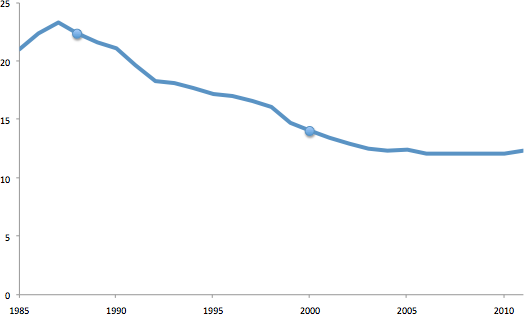This is your media on “drugs”
You may believe, Gentle Reader, that this blog is entirely negative towards stories about drugs. That’s because the relationship between numbers and conclusions is often seriously overstated, if not completely made up. An illustrative example is today’s story in the Herald. Apart from the statistics, this is a reasonable story. It has information based on actual measurements, and comments from two people who know what they are talking about, one of whom is independent of the data source. Unfortunately, the story is let down by the statistics.
Police and ESR actually grew some cannabis from high-quality seized material, and measured the THC concentration, comparing the results to when they did the same exercise in 1996. This is potentially a fair comparison, although the sample size is small. Unfortunately, they reported the mean (6%) from 1996 and the range (4.35%-25.3%) from the recent study, so the conclusion in the headline “Dope quadruples in THC strength” is not actually supported by the article. The growing study wasn’t even that recent — it ran from 2004 to 2006 — making the support for the headline even more dubious. It’s not that the headline is intrinsically improbable, if growing has largely moved indoors and changed to modern strains, but we aren’t given any evidence.
The comment by Detective Sergeant Miller that “We are not seeing poor quality cannabis. It’s all good quality” is interesting. In the US, according to Stanford expert Keith Humphreys, that isn’t the case: there is a lot of cheap, low-grade cannabis, and a smaller amount of boutique high-grade stuff.
Robin Ross Bell, from the Drug Foundation, makes the important point that we don’t actually know if higher concentrations of THC are more dangerous — people may just use less when it’s strong. This is especially true since smoking gives immediate feedback on dose, and we do know that tobacco smokers get about the same nicotine dose from varying nicotine concentrations in cigarettes. It’s encouraging that there is actual research being done on this topic.





